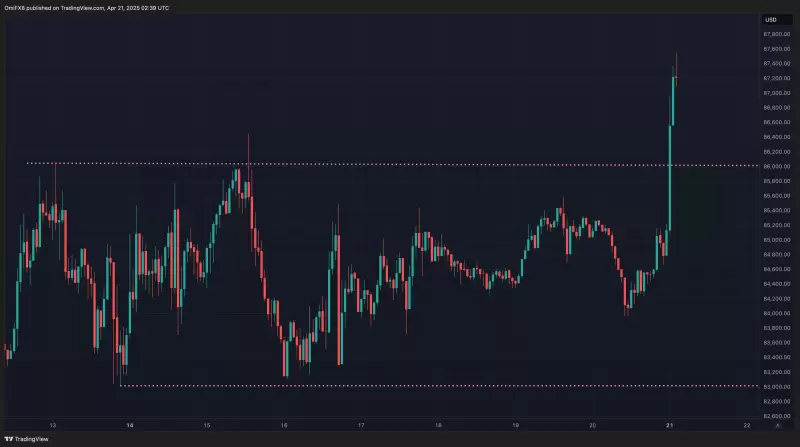 |
|
 |
|
 |
|
 |
|
 |
|
 |
|
 |
|
 |
|
 |
|
 |
|
 |
|
 |
|
 |
|
 |
|
 |
|
Cryptocurrency News Articles
Pi Protocol Chooses Solana as Its Native Blockchain Network to Enhance the Efficiency and Scalability of Its USPi Governance Token
Apr 19, 2025 at 11:11 am
Pi Protocol, a recently launched stablecoin initiative spearheaded by Tether co-founder Reeve Collins, has officially chosen Solana as its native blockchain network.

Pi Protocol, the stablecoin initiative co-founded by Tether veteran Reeve Collins, has selected Solana as the native blockchain network for its operations. This move is designed to enhance the efficiency and scalability of the protocol's USPi governance token, leveraging Solana's strengths in high-speed transactions and low operational costs.
Despite adopting Solana as the core infrastructure, the protocol will maintain full compatibility with Ethereum for its USP stablecoin, ensuring cross-chain operability and expanding the token's reach to a broader user base.
This integration step is seen as a calculated move to maximize performance and minimize transaction fees, two critical factors in the stablecoin and decentralized finance (DeFi) ecosystem.
The shift also reflects a broader industry trend where emerging projects are seeking infrastructure that can accommodate high throughput and deliver seamless user experiences without the high gas costs typically associated with networks like Ethereum.
Pi Protocol is structured around an innovative three-token model designed to create a robust and flexible financial ecosystem. At the core is the USP stablecoin, which is pegged to the US dollar and backed by tokenized real-world assets (RWAs).
These underlying assets include instruments such as US Treasuries, insurance products, and money market funds. This asset-backed model is intended to offer greater transparency and stability in the value of the stablecoin, distinguishing it from algorithmic or uncollateralized alternatives.
Alongside USP, the protocol also includes the USI yield token. This asset is engineered to capture yield from the underlying collateral, thereby providing investors with returns generated from the tokenized real-world holdings.
By separating yield generation from transactional utility, the platform offers more targeted financial instruments for users with varying risk and return profiles.
Completing the trio is the USPi token, which serves as the governance component of the ecosystem. This governance token is designed to empower the protocol’s community with decision-making authority, influencing future developments, policy changes, and potential upgrades.
By decentralizing control, Pi Protocol aims to foster a more transparent and democratic operational model, aligning with the broader principles of the DeFi movement.
With the adoption of Solana, the protocol anticipates faster confirmation times, reduced latency, and a better user experience for transactions involving the USPi token. Meanwhile, Ethereum compatibility ensures that the USP stablecoin remains accessible to a broader range of users and platforms, especially those already integrated within the Ethereum ecosystem.
This dual-network approach combines the best features of both chains—Solana's performance with Ethereum's established liquidity and developer tools. As stablecoin projects face increasing scrutiny and competition, Pi Protocol's asset-backed model and multi-token architecture offer a potentially compelling alternative that emphasizes security, utility, and scalability.
The introduction of Pi Protocol with a Solana foundation marks another step in the evolution of decentralized financial instruments. By integrating real-world assets and using blockchain to manage them transparently, the protocol appears set to challenge conventional models and contribute meaningfully to the maturing stablecoin sector.
Disclaimer:info@kdj.com
The information provided is not trading advice. kdj.com does not assume any responsibility for any investments made based on the information provided in this article. Cryptocurrencies are highly volatile and it is highly recommended that you invest with caution after thorough research!
If you believe that the content used on this website infringes your copyright, please contact us immediately (info@kdj.com) and we will delete it promptly.
-

-

-

- BTC Leads the Crypto Charts as Various Trends Show up Among Top Tokens
- Apr 21, 2025 at 12:55 pm
- The current price value of Bitcoin (BTC) sits at $84,483.95 with a 0.88% weekly rise. This digital currency leads the market using a market valuation of $1.67 trillion and 19.85 million BTC presently in circulation.
-
![Bitcoin [BTC] Short-term Holders Continue to Realize Losses as Their SOPR Drops Below 1 Bitcoin [BTC] Short-term Holders Continue to Realize Losses as Their SOPR Drops Below 1](/assets/pc/images/moren/280_160.png)
-

-

-

- The Solana network briefly surpassed Ethereum in total staked value, sparking debate over whether it is actually bullish or bearish.
- Apr 21, 2025 at 12:45 pm
- More than $53.9 billion worth of SOL is now staked on the Solana network from 505938 unique wallet holders, who are making an 8.31% annualized return
-

-






















































![Bitcoin [BTC] Short-term Holders Continue to Realize Losses as Their SOPR Drops Below 1 Bitcoin [BTC] Short-term Holders Continue to Realize Losses as Their SOPR Drops Below 1](/uploads/2025/04/21/cryptocurrencies-news/articles/bitcoin-btc-shortterm-holders-continue-realize-losses-sopr-drops/middle_800_480.webp)



